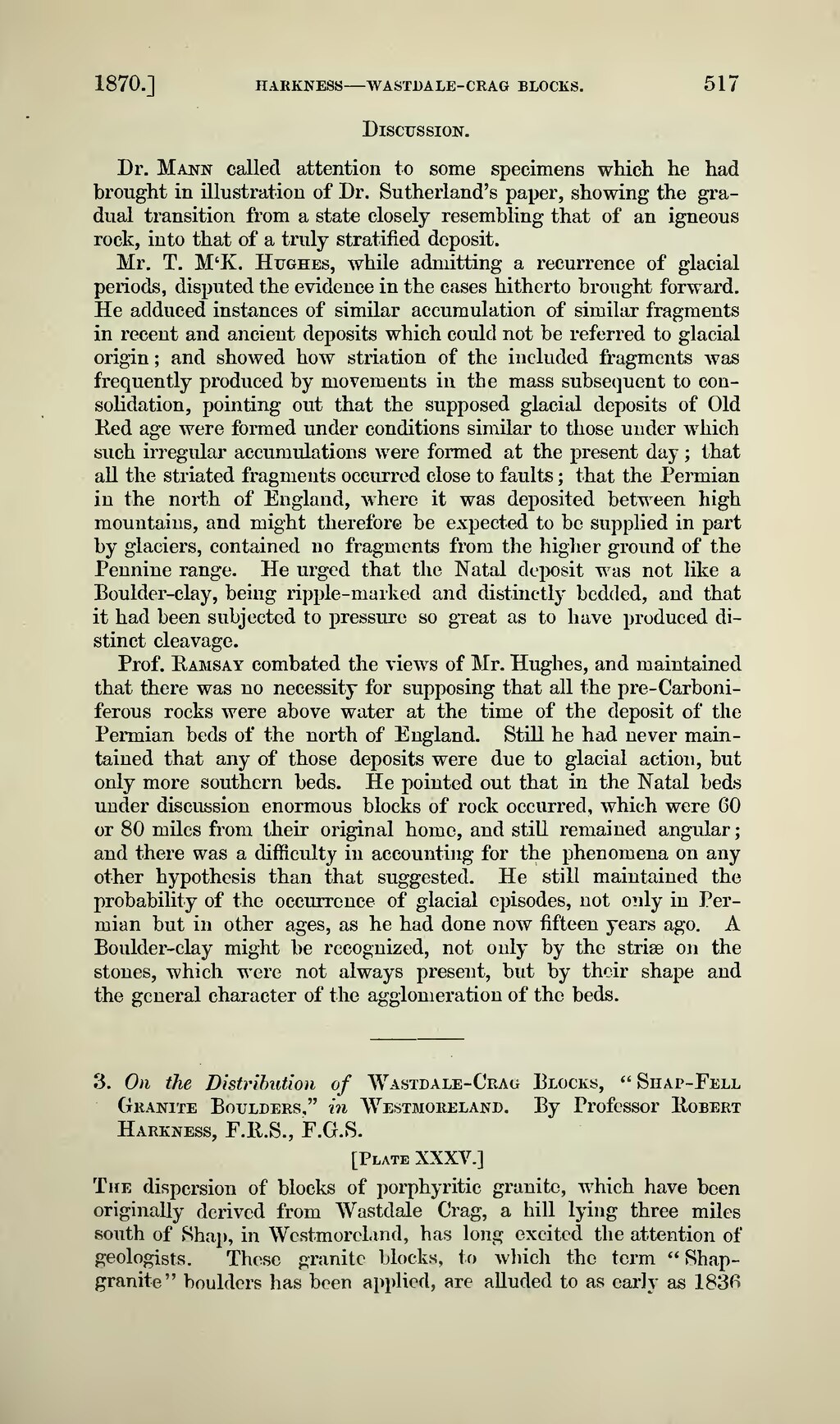Discussion.
Dr. Mann called attention to some specimens which he had brought in illustration of Dr. Sutherland's paper, showing the gradual transition from a state closely resembling that of an igneous rock, into that of a truly stratified deposit.
Mr. T. M'K. Hughes, while admitting a recurrence of glacial periods, disputed the evidence in the cases hitherto brought forward. He adduced instances of similar accumulation of similar fragments in recent and ancient deposits which could not be referred to glacial origin ; and showed how striation of the included fragments was frequently produced by movements in the mass subsequent to consolidation, pointing out that the supposed glacial deposits of Old Red age were formed under conditions similar to those under which such irregular accumulations were formed at the present day ; that all the striated fragments occurred close to faults ; that the Permian in the north of England, where it was deposited between high mountains, and might therefore be expected to be supplied in part by glaciers, contained no fragments from the higher ground of the Pennine range. He urged that the Natal deposit was not like a Boulder-clay, being ripple-marked and distinctly bedded, and that it had been subjected to pressure so great as to have produced distinct cleavage.
Prof. Ramsay combated the views of Mr. Hughes, and maintained that there was no necessity for supposing that all the pre-Carboniferous rocks were above water at the time of the deposit of the Permian beds of the north of England. Still he had never maintained that any of those deposits were due to glacial action, but only more southern beds. He pointed out that in the Natal beds under discussion enormous blocks of rock occurred, which were 60 or 80 miles from their original home, and still remained angular ; and there was a difficulty in accounting for the phenomena on any other hypothesis than that suggested. He still maintained the probability of the occurrence of glacial episodes, not only in Permian but in other ages, as he had done now fifteen years ago. A Boulder-clay might be recognized, not only by the striae on the stones, which were not always present, but by their shape and the general character of the agglomeration of the beds.
3. On the Distribution of Wastdale-Crag Blocks, " Shap-Fell Granite Boulders," in Westmoreland. By Professor Robert Harkness, F.R.S., F.G.S.
[Plate XXXV.]
The dispersion of blocks of porphyritic granite, which have been originally derived from Wastdale Crag, a hill lying three miles south of Shap, in Westmoreland, has long excited the attention of geologists. These granite blocks, to which the term " Shap-granite" boulders has been applied, are alluded to as early as 1836
